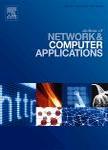版权所有:内蒙古大学图书馆 技术提供:维普资讯• 智图
内蒙古自治区呼和浩特市赛罕区大学西街235号 邮编: 010021

作者机构:Vali E Asr Univ Rafsanjan Comp Engn Dept Rafsanjan Iran
出 版 物:《JOURNAL OF NETWORK AND COMPUTER APPLICATIONS》 (J Network Comput Appl)
年 卷 期:2025年第234卷
核心收录:
学科分类:08[工学] 0835[工学-软件工程] 0812[工学-计算机科学与技术(可授工学、理学学位)]
基 金:All authors have read and approved the final manuscript and agree with the order of authorship
主 题:Community detection Random walk algorithm Complex networks Similarity based on graph structure Evolutionary algorithm
摘 要:In recent years, due to the existence of intricate interactions between multiple entities in complex networks, ranging from biology to social or economic networks, community detection has helped us to better understand these networks. In fact, research in community detection aims at extracting several almost separate sub-networks called communities from the complex structure of a network in order to gain a better understanding of network topology and functionality. In this regard, we propose a novel community detection method in this paper that is performed based on our defined architecture composed of four components including Pre-Processing, Primary Communities Composing, Population Generating, and Genetic Mutation components. In the first component, we identify and store similarity measures and estimate the number of communities. The second component composes primary community structures based on several random walks from significant center nodes. Afterwards, our identified primary community structure is converted to a suitable chromosome structure to use in next evolutionary-based components. In the third component, we generate a primary population along with their objective function. Then, we select several significant chromosomes from the primary population and merge their communities in order to generate subsequent populations. Finally, in the fourth component, we extract several best chromosomes and apply the mutation process on them to reach the best community structure considering evaluation functions. We evaluate our proposal based on different size of network scenarios including both real and artificial network scenarios. Compared with other approaches, the community structures detected by our proposal are not dependent on the size of networks and exhibit acceptable evaluation measures in all types of networks. Therefore, our proposal can detect results similar to real community structure.